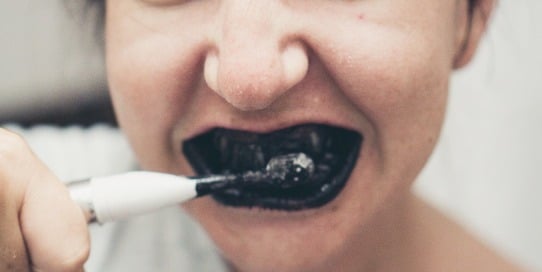
What Is Non-Abrasive Toothpaste?
Non Abrasive Toothpaste
Have you ever wondered how toothpaste actually helps your teeth stay strong and healthy? I know I have. Luckily, it’s not rocket science, so please let me try to explain. It basically works in two ways:
- An abrasive element mechanically scrapes away plaque and tartar.
- Fluoride rebuilds and strengthens the outer layer of the tooth.
Let’s look at how abrasion plays a key role in cleaning your teeth and help you find a highly rated non-abrasive toothpaste. With that being said, let’s start.
How Abrasion Both Cleans And Damages Your Teeth At The Same Time
Toothpaste cleans your teeth by the use of an abrasive element. The most commonly used elements are calcium carbonate, silica, aluminum hydroxide, and phosphates of aluminum or calcium. They will scrub and scrape away plaque and tartar, thereby giving you cleaner and whiter-looking teeth.
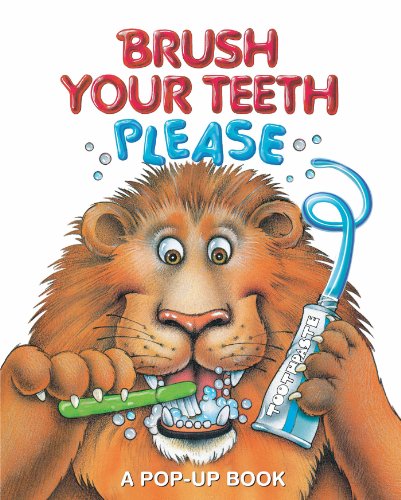
Now that’s all good, but unfortunately, the scrubbing and scraping also remove some of the outer layers of your teeth. This protective outer layer, called the enamel, is therefore at risk of being permanently damaged. To avoid this from happening, many people prefer to use non-abrasive toothpaste. But before we move on to discuss that, let’s first look at this…
The 5 Things That Affect Enamel Health
It’s important to know that the choice of toothpaste isn’t the only thing that affects the wear on your teeth. There are actually several other things that affect your dental health. Here are the five most important:
- What you eat and drink
- Brushing technique
- Type of toothbrush
- How often you brush your teeth
- Choice of toothpaste
The first four points are all pretty logical and straightforward, so we will not go into any specific details about them. But what we will say is this. The harder the toothbrush and your brushing technique are, and the more often you brush, the more your teeth will be eroded.
As for foods and their impact on dental health, read this.
In this article, we will focus on the last point (#5), Choice of toothpaste.
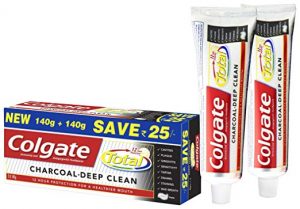 Why Non-Abrasive Toothpastes Don’t Exist
Why Non-Abrasive Toothpastes Don’t Exist
It’s important to tell you right away that the term “non-abrasive” is actually not an accurate term to use when it comes to toothpastes, because there are no toothpastes that are truly non-abrasive. In fact, all types of toothpaste are abrasive to some degree, and even brushing your teeth without any would still cause some abrasion. Now, all kinds of toothpaste are not created equal; Some are better than others. So if you are concerned about this, you should look for a low-abrasive toothpaste.
Relative Dentin Abrasivity Index
Thanks to the Relative Dentin Abrasivity (RDA) measuring method (don’t worry, although radioactivity is used, it’s completely safe!) each toothpaste gets an RDA value, which allows us to compare them against each other. The American Dental Association (ADA) has set the following RDA value recommendations:
To give you an idea of the big spread between the different brands and products, take a look at this list of toothpastes and their RDA values below. As you can see, the least abrasive toothpaste is the Elmex sensitive toothpaste, with an abrasivity of only 30, while other brands are as high as 200. For comparison, using only a toothbrush and plain water has an RDA value of 4.
If your toothpaste isn’t on the list, and if it’s not specified on the box or tube, here’s an easy way to determine if it’s high-, medium- or low-abrasive:
Toothpaste Abrasiveness
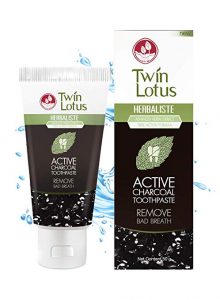 The toothpaste you are using may be wearing away the enamel and dentin on your teeth, especially at the gumline! The use of “grit” in toothpaste is not unlike the use of grit on sandpaper. The more grit there is, the more effective it is at removing stain and plaque. Unfortunately, a significant downside is the destruction of tooth structure.
The toothpaste you are using may be wearing away the enamel and dentin on your teeth, especially at the gumline! The use of “grit” in toothpaste is not unlike the use of grit on sandpaper. The more grit there is, the more effective it is at removing stain and plaque. Unfortunately, a significant downside is the destruction of tooth structure.
There is an abrasive index for toothpastes called the RDA Index. The higher the value, the more abrasive it is. At or below 45 may be an acceptable balance between benefits and risks if you must use toothpaste. Over 45 is a matter of how quickly the loss of tooth structure can occur based on the RDA, frequency of use, type of toothbrush, and brushing technique. If you don’t know the RDA of your toothpaste, you can find out by using the consumer contact information on the package or container. The following list gives the RDA index of just some of the many kinds of toothpaste that exist today.
Abrasivity of common toothpastes
| RDA | Brand & Variety |
|---|---|
| 4 | ADA reference toothbrush and plain water |
| 7 | plain baking soda |
| 8 | Arm & Hammer Tooth Powder |
| 30 | Elmex Sensitive Plus |
| 35 | Arm & Hammer Dental Care |
| 42 | Arm & Hammer Advance White Baking Soda Peroxide |
| 44 | Squigle Enamel Saver |
| 48 | Arm & Hammer Dental Care Sensitive |
| 49 | Arm & Hammer Peroxicare Tartar Control |
| 49 | Tom’s of Maine Sensitive (given as ’40s) |
| 52 | Arm & Hammer Peroxicare Regular |
| 53 | Rembrandt Original (“RDA”) |
| 54 | Arm & Hammer Dental Care PM Bold Mint |
| 57 | Tom’s of Maine Children’s, Wintermint (given as mid-50s) |
| 62 | Supersmile |
| 63 | Rembrandt Mint (“Hefferren RDA”) |
| 68 | Colgate Regular |
| 70 | Colgate Total |
| 70 | Arm & Hammer Advance White Sensitive |
| 70 | Colgate 2-in-1 Fresh Mint (given as 50-70) |
| 79 | Sensodyne |
| 80 | AIM |
| 80 | Close-Up |
| 83 | Colgate Sensitive Maximum Strength |
| 91 | Aquafresh Sensitive |
| 93 | Tom’s of Maine Regular (given as high 80’s low 90’s) |
| 94 | Rembrandt Plus |
| 94 | Plus White |
| 95 | Crest Regular (possibly 99) |
| 101 | Natural White |
| 103 | Mentadent |
| 103 | Arm & Hammer Sensation |
| 104 | Sensodyne Extra Whitening |
| 106 | Colgate Platinum |
| 106 | Arm & Hammer Advance White Paste |
| 107 | Crest Sensitivity Protection |
| 110 | Colgate Herbal |
| 110 | Amway Glister (given as upper bound) |
| 113 | Aquafresh Whitening |
| 117 | Arm & Hammer Advance White Gel |
| 117 | Arm & Hammer Sensation Tartar Control |
| 120 | Close-Up with Baking Soda (canadian) |
| 124 | Colgate Whitening |
| 130 | Crest Extra Whitening |
| 133 | Ultra brite |
| 144 | Crest MultiCare Whitening |
| 145 | Ultra brite Advanced Whitening Formula |
| 150 | Pepsodent (given as upper bound) |
| 165 | Colgate Tartar Control (given as 155-165) |
| 168 | Arm & Hammer Dental Care PM Fresh Mint |
| 175 | Colgate Luminous (given as 150-200) |
| 200 | Colgate 2-in-1 Tartar Control/Whitening or Icy Blast/Whitening (given as 190-200) |
| 200 | FDA recommended limit |
| 250 | ADA recommended limit |
Recommendations
Powered toothbrush users should avoid toothpastes from near the bottom of the list. Long-term use of such toothpastes might wear down your enamel.
Pay attention to the pressure. If the bristles look mashed down, you are brushing way too hard. The bristles on your old toothbrush should look just as parallel as on your new toothbrush. Don’t brush so hard, and your teeth will thank you for it.
Least Abrasive Toothpaste
A lower RDA indicates a less abrasive toothpaste. Here are some examples of toothpaste with a lower RDA:
- Sensodyne Pronamel Gentle Whitening Toothpaste (RDA 35)
- Tom’s of Maine Antiplaque and Whitening Toothpaste (RDA 47)
- Colgate Sensitive Pro-Relief Enamel Repair Toothpaste (RDA 48)
- Arm & Hammer PeroxiCare Deep Clean Toothpaste (RDA 52)
- Crest Pro-Health Toothpaste (RDA 70)
These toothpastes are generally considered to be less abrasive than others and are better for people with sensitive teeth or for those who want to avoid excessive abrasion on their teeth. However, it’s important to note that even toothpastes with a lower RDA can still cause damage if used excessively or with too much pressure when brushing.
Popular Non-Abrasive Toothpaste Brands
To help you find the best and most sensitive toothpaste for you, we have selected three very popular products that are all highly rated by Amazon customers. Click the images or product names to find customer reviews and more information about them!
You could choose any of the above products and be happy with the results. But don’t take my word for it; check out what the customers are saying! Good luck!
Best Selling Toothpastes
- Crest Complete Whitening Plus Scope Toothpaste – Minty Fresh, Net Wt. 6.2 oz(175 g) (Pack of 3)
- Crest 3D White Radiant Mint Whitening Toothpaste, 3.5 oz Twinpack
- Colgate Total Whitening Toothpaste Twin Pack, 6 Ounce
Final Word
You’ve most likely heard the term “non-abrasive toothpaste,” but what exactly does it mean? Scrubbing power is an indication of abrasiveness. While some abrasiveness is required to remove plaque and stains (or we wouldn’t be able to clean our teeth), most toothpastes on the market contain additives that are far too abrasive and can virtually eliminate enamel, the hard outer layer of a tooth. Enamel does not regrow; it’s gone for good once it’s gone. That is why using a low abrasive toothpaste is one of the greatest things you can do for your teeth.

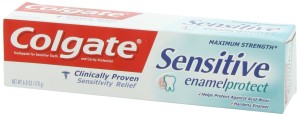



4 Replies to “What Is Non-Abrasive Toothpaste?”
Are any if these liw rda acceptable for a full mouth dental implants?
Ugh! I hear you! Why is it so hard to find a great toothpaste for implants? I know so many people now with them, you would think there would be more options. When you het the implants the Doc doesnt even discuss this. I’ve been using Oxyfresh Pro formula. States low abrasion on the tube but I’m looking for an organic alternative. Good luck in the hunt. I’m still searching.
I want to know the answer to that question as well